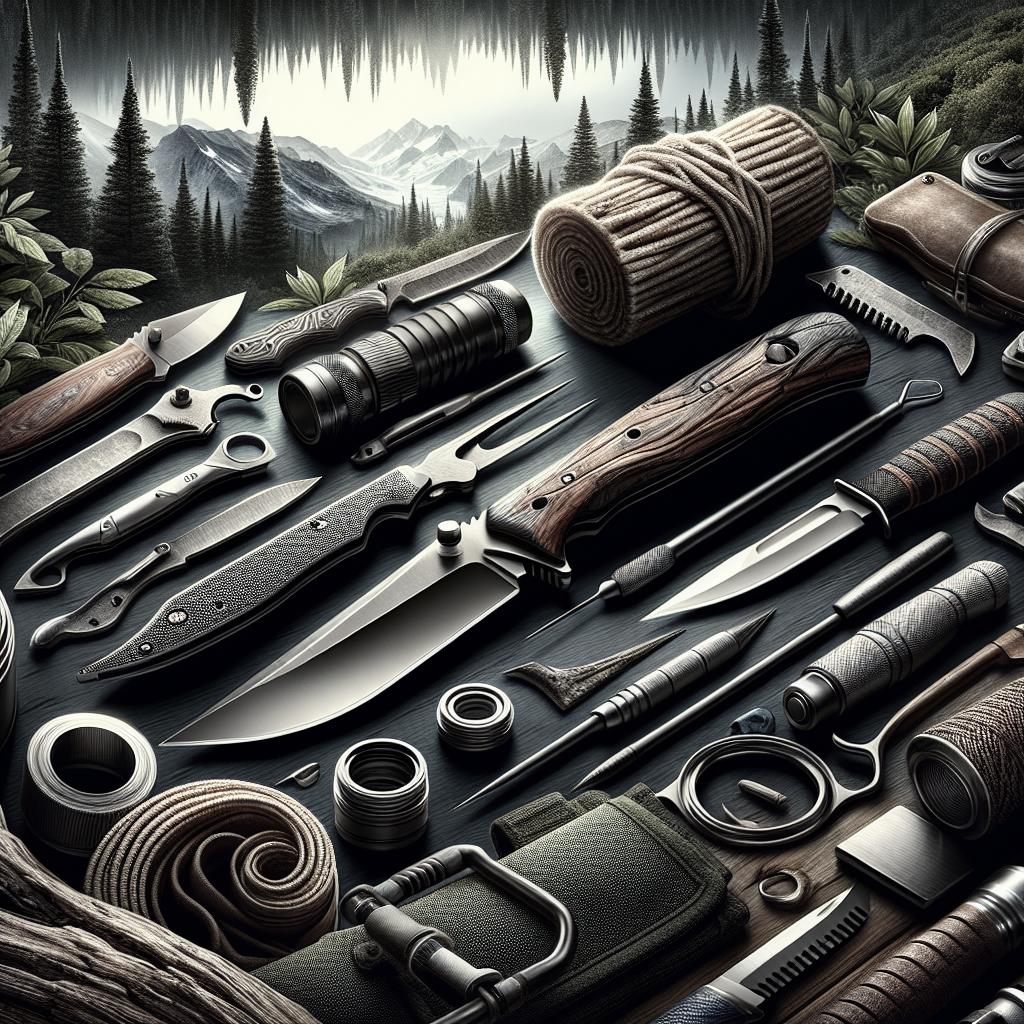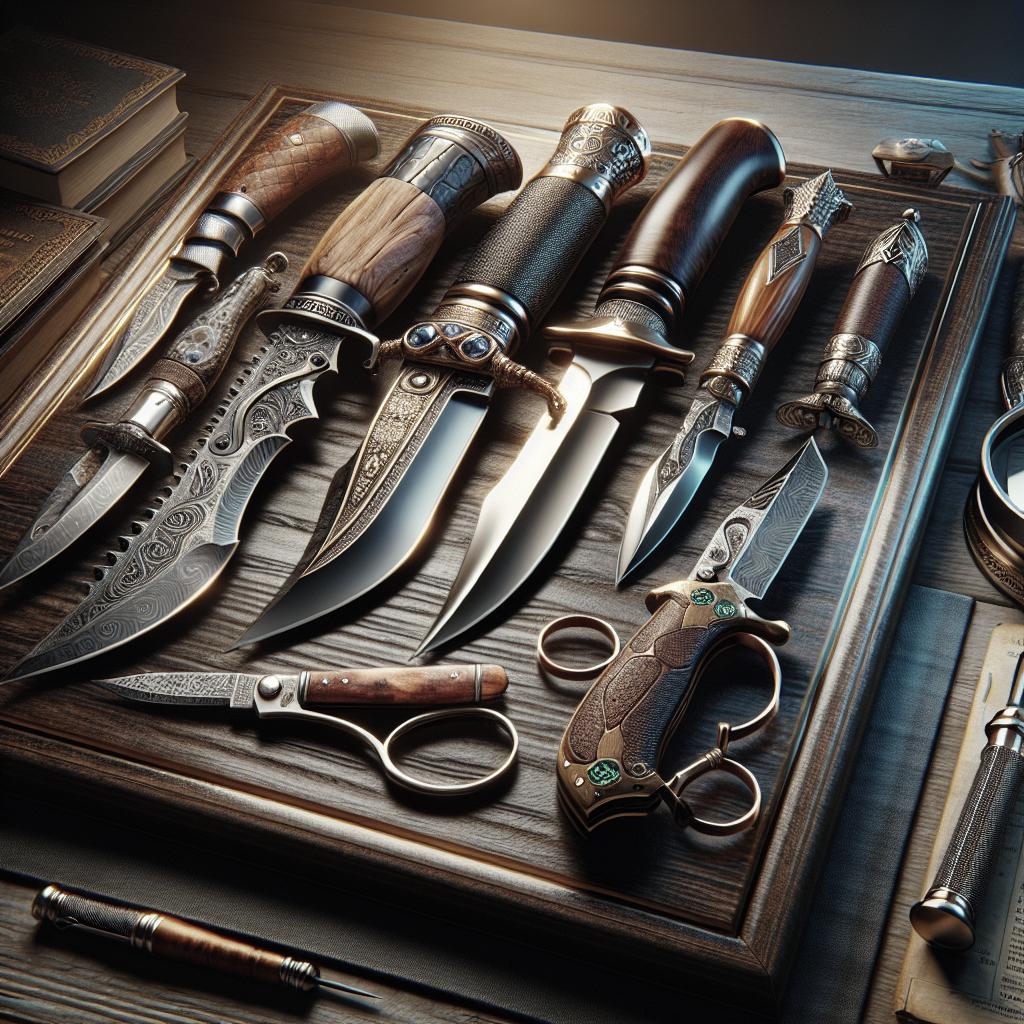Introduction: How to Choose the Right Survival Knife
Choosing the right survival knife is a critical decision for outdoor enthusiasts, as it’s an essential tool whether you are camping, hiking, or in need of emergency survival gear. In this comprehensive guide, we will walk you through the key factors to consider when selecting a knife for your outdoor adventures. From understanding the legal aspects to exploring different blade types, sizes, and materials, this blog will equip you with the knowledge to make an informed decision. Whether you need a knife for cutting, carving, or protection, learning about the integral components such as blade shape and the type of steel used will aid you in finding a knife that stands the test of time and demands of the great outdoors.
Step 1: The Law
Before selecting a survival knife, understanding the legal frameworks surrounding knife carrying and usage in your region is imperative. Different countries, states, or provinces may impose strict regulations on the type and size of knives permitted for outdoor activities. It’s important to research these laws to avoid legal repercussions, especially if the knife is to be carried for self-defense or within certain restricted areas.
Furthermore, it’s crucial to understand differences between carrying a knife for practical purposes versus as a weapon, as laws might be more lenient for utility knives. Visiting local government websites or consulting legal experts can provide clarity on legal restrictions and permissions pertaining to knife ownership and usage in outdoor environments.
Step 2: Film Knives
While it might be tempting to emulate the iconic knives seen in adventure films, it’s essential to distinguish between Hollywood embellishments and practical utility. Knives featured in movies often prioritize aesthetic appeal over functionality and may not perform well under real-world conditions. Hence, avoiding knives that mimic movie props is advisable unless they also meet quality and performance standards.
Though such knives may captivate with their design and historical significance, focusing on aspects like durability, material quality, and the ability to handle the rigors of outdoor use is paramount. Consider a knife with proven effectiveness rather than one chosen purely for its on-screen appeal.
Step 3: Parts of a Knife
Understanding the anatomy of a knife is fundamental in choosing the right one. Typically, a knife consists of the blade, handle, tang, and edge. The blade encompasses various elements, including the spine, tip, and grind, each contributing to the knife’s performance and utility in diverse scenarios.
The handle should offer comfort and a secure grip, while the tang, which is the part of the blade extending into the handle, dictates the knife’s balance and strength. A full tang offers greater resilience during demanding tasks. Knowing the specific parts and their functions can guide you toward making a well-informed decision.
Step 4: Type of Knife
Dive into the world of knives, and you will quickly discover a vast array of types tailored for specific outdoor tasks. Fixed-blade knives are popular in survival settings due to their robust construction, ease of maintenance, and versatility for heavy-duty tasks such as chopping and digging.
Alternatively, folding knives offer compactness and convenience for everyday carry but may not possess the same durability as their fixed-blade counterparts. Reflecting on the primary purpose of your knife—be it for hunting, fishing, or general survival—will dictate the type most suitable for your needs.
Step 5: Size
Size matters when it comes to selecting the perfect survival knife. A smaller knife offers greater control during intricate tasks, whereas a larger knife may excel in tasks demanding strength, such as chopping wood for shelter or firewood.
Consider the weight and balance of the knife, as these elements significantly influence its practicality and comfort during extended use. Ultimately, opt for a size that aligns with your ability to wield it effectively for intended activities.
Step 6: Tang
The tang is an often overlooked yet crucial aspect of knife selection, affecting both durability and balance. A full tang extends throughout the handle, ensuring greater stability and strength under pressure, making it ideal for demanding outdoor challenges.
Partial tangs, conversely, may suffice for lighter tasks but could compromise durability. For serious outdoor enthusiasts, a full-tang construction remains the preferred choice, as it ensures readiness for any survival scenario.
Step 7: Knife Edge Grinds
Knife edge grinds refer to how the blade’s edge is shaped, impacting its cutting performance and ease of sharpening. Common grinds include flat, hollow, and convex, each offering unique benefits.
The flat grind excels in general utility, offering a balance of strength and cutting efficiency. Hollow grinds are favored for delicate work requiring precision sharpness, while convex grinds provide greater resilience for heavy-duty cutting tasks. Understanding the strengths of each grind will guide you toward the ideal edge for your outdoor adventures.
Step 8: Blade Shape
The shape of a knife’s blade can determine its suitability for specific tasks. A drop point blade, with a robust design, is popular for general outdoor use, offering versatility and strength.
Clip point blades provide a thinner, sharper tip for precision work, while tanto blades excel in piercing tasks. Consider the nature of outdoor activities you engage in and select a blade shape that aligns with your intended usage to optimize efficiency and performance.
Step 9: Blade Hardness
Blade hardness is a critical property influencing a knife’s performance and durability. Measured on the Rockwell scale, hardness dictates a blade’s ability to hold an edge and resist wear and tear.
While a harder blade offers superior edge retention, it may be more challenging to sharpen. Conversely, softer blades can dull faster but are easier to maintain. Striking a balance between edge retention and ease of sharpening based on your outdoor activities remains a vital consideration.
Step 10: Handle
The handle of a survival knife should ensure ergonomic comfort for extended use, provide a firm grip, and resist environmental elements. Materials such as rubber and micarta offer slip-resistant properties, enhancing grip stability even in wet conditions.
Handle design, texture, and contouring play a crucial role in maximizing comfort and safety. A well-designed handle reduces hand fatigue and improves control during intricate tasks, making material choice pivotal for efficient handling.
Step 11: Sheath
A quality sheath is essential for safely storing and transporting your knife. It should protect the blade from environmental damage and provide quick access when needed.
Consider materials such as leather or kydex, renowned for durability and strength. Additionally, secure attachment options like loops or clips ensure the knife remains accessible and secure across various terrains.
Step 12: Additional Features
Some knives offer additional features such as fire starters, built-in sharpeners, or storage compartments in the handle. While these extras can enhance utility, they should not overshadow fundamental qualities like durability and functionality.
Assess whether these additional features align with your outdoor goals, ensuring they complement the primary uses of the knife without compromising its core effectiveness.
Step 13: Knife Steel Type
The steel type used in a knife profoundly impacts its performance, corrosion resistance, and maintenance needs. Stainless steel offers excellent corrosion resistance, suitable for wet environments, while carbon steel excels in strength and edge retention.
Deciding on a steel type involves balancing the maintenance requirements with performance expectations, adapting to the specific conditions you’ll encounter during outdoor excursions.
Step 14: Image Sources
When showcasing knives for outdoor activities on blogs or educational content, sourcing high-quality images enhances the reader’s experience. Ensure image sources allow for use in public settings or obtain necessary permissions if they are not in the public domain.
Utilize reputable sources, aim for clear and detailed images, and credit sources appropriately, as visuals can greatly aid in illustrating the features and functions of different knives.
Lessons Learned
| Aspect | Description |
|---|---|
| Law | Understanding knife-related legal frameworks is crucial to avoid legal issues. |
| Film Knives | Movie knives might not be practical for real-world use; focus on functionality. |
| Parts of a Knife | Knowing the knife’s anatomy aids in selecting suitable features. |
| Type of Knife | Fixed or folding, the knife type should align with intended use. |
| Size | Consider control and strength requirements when choosing size. |
| Tang | Full tangs provide superior durability and stability. |
| Knife Edge Grinds | Edge grind type determines cutting performance and sharpening ease. |
| Blade Shape | Select a shape that matches the primary tasks you’ll perform. |
| Blade Hardness | Balance edge retention with ease of sharpening for best performance. |
| Handle | Choose a handle for comfort, grip, and environmental resistance. |
| Sheath | Ensure the sheath offers protection and accessibility. |
| Additional Features | Consider additional useful features without sacrificing core functionality. |
| Knife Steel Type | Choose steel based on performance and maintenance needs. |
| Image Sources | Use quality images responsibly, with proper credits. |


